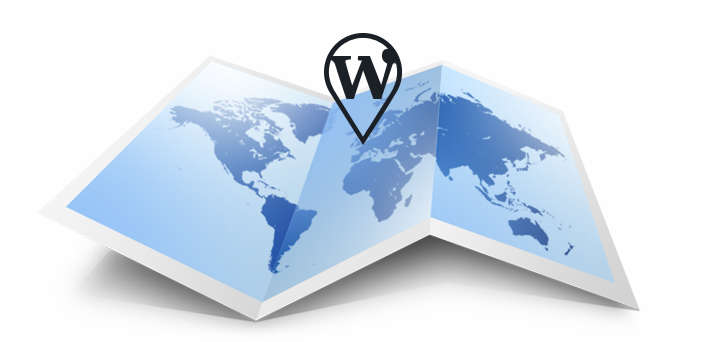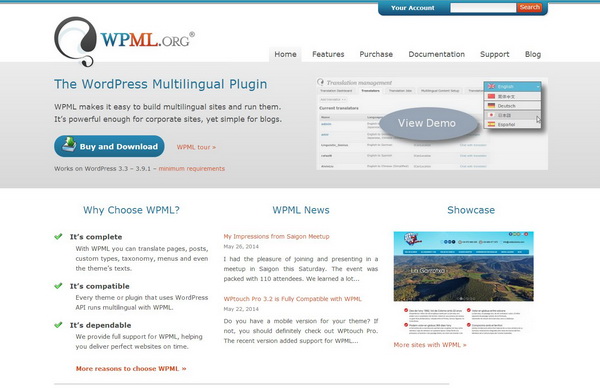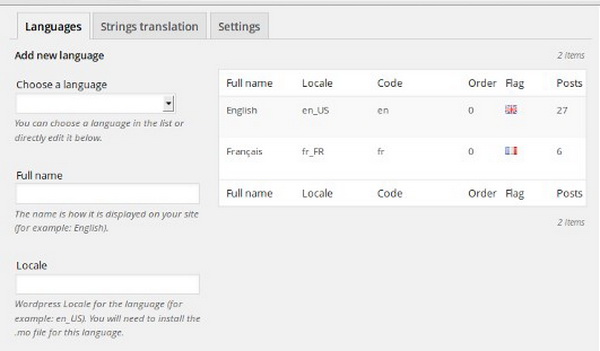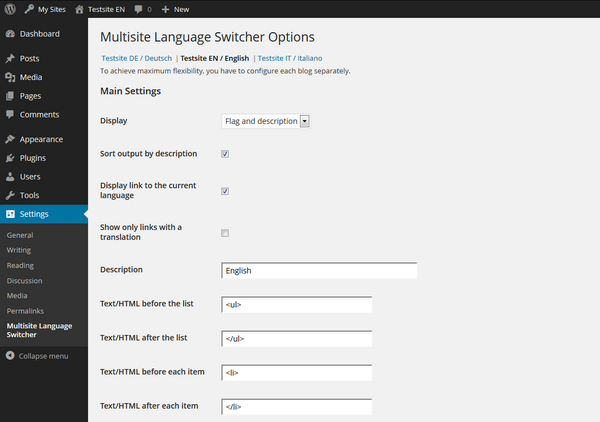If your WordPress site or online store is being reading by users from different countries, it’s quite rational to create multilingual website’s versions. It will help you not only to hold the existent audience, but also attract new people. Converting your site in different languages can’t be done without using any suitable WordPress multilingual plugin into its functionality. It will assist you in translating the content, so you will get one website in several languages.
To give you the main idea how to install the multilingual plugin, we made this step-by-step instruction:
1) Download the most suitable plugin for your website;
2) Extract all the files;
3) Upload everything (keeping the directory structure) to the /wp-content/plugins/directory.
or Copy the entire directory in your plugin directory of your WordPress blog.
4) Activate the plugin through the ‘Plugins’ menu in WordPress.
5) Set the configuration in Options -> Multisite Language Switcher.
6) Go to the Language Settings or Configuration Page (it depends from your plugin) and choose any language you need.
7) Now you can edit the text that should be translated.
8) Add the Multilingual Widget which displays a hint to the user if a translation is available.
Actually, it’s not complicated to set any multilingual plugin, the main thing is not to hurry and follow the tips.
In this post, we prepared for you some quality multilingual plugins, premium and free, to assist you in completing this task. To help you better understand which exactly plugin will suit to your WordPress site, you can find the brief description for each of them:
The WordPress Multilingual Plugin
This premium plugin becomes the most popular among others, because of its great capabilities and powerful translation management. With a single WordPress install, you can build multilingual sites, blogs and ecommerce stores. WPML translates each piece of your content, starting from pages and posts to the comments.
WPML consists of a core plugin and add-ons. After core plugin is installed, you can select the additional plugins which will extend your website’s functionality. The default install offers more than 40 languages, but you can also add your own language variants. There are three different versions which you can choose for your website and get unlimited sites, full support and 30 days money-back guarantee. Admins can choose from arranging the different versions in separate directories, in different subdomains or on completely different domains.
Summarizing all mentioned above, we’d like to highlight the main essential features of WPML plugin:
- reliability and smooth compatibility;
- great SEO optimization;
- availability to set multilingual e-commerce;
- easy content translation;
- simple setup wizard;
- professional support;
- risk free and money saving.
If you are planning to get the new WordPress theme first, it’s preferable to choose the template that supports WPML, so it will be easier for you to set it up.
But if you are looking for the smart alternatives, we prepared for you some free multilingual plugins which can serve you in this task:
With the help of this plugin you can manage your content in various languages as well as get access to professional human translation, one-click switching between languages and one language for each URL. It’s really good choice for all beginners who just start their work with WordPress. Please be aware of slow updates currently.
Polylang assists you in multilingual content management support to WordPress, so you can translate various posts, pages, post tags, categories, menu widgets and much more. This plugin creates entirely different posts for each definite language. WordPress language files are automatically downloaded and updated.
Multisite Language Switcher Plugin
It is another free WordPress plugin that allows you to manage translations of posts, pages, custom post types, categories, tags and taxonomies. Working with this plugin, you need to make each separate WordPress installation for each language. Supported languages included Spanish, Brazillian Portuguese, German, Italian, Polish and others.
Whether you will decide to get premium or free multilingual plugin, the essential thing is to make a deep research and find the most appropriate one. Think in advance about some technical details, such as: your website’s url structure, in what language you need to serve interface and the admin panel, in which way your visitors can switch the languages, etc. In this way, you will make the right choice.




